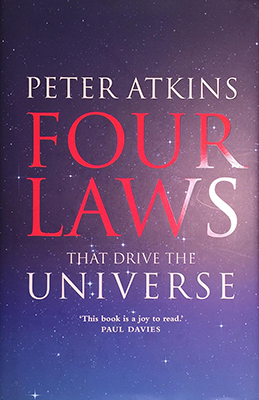Four Laws That Drive The Universe
“Four Laws That Drive the Universe” is a book written by Peter Atkins, a renowned chemist and educator. Published in 2007, the book explores four fundamental laws of nature that govern the behavior of the universe at its most basic levels. Here’s a summary of the four laws discussed in Atkins’ book:
The Zeroth Law of Thermodynamics: The Zeroth Law states that if two systems are each in thermal equilibrium with a third system, then they are in thermal equilibrium with each other. This law establishes the concept of temperature and forms the basis for the measurement of heat transfer and the definition of thermal equilibrium.
The First Law of Thermodynamics: The First Law states that energy cannot be created or destroyed; it can only be transformed from one form to another or transferred from one system to another. This law is fundamental to understanding conservation of energy in all physical processes, including chemical reactions, heat transfer, and mechanical work.
The Second Law of Thermodynamics: The Second Law states that the entropy of an isolated system always increases over time, or remains constant in ideal cases where the system is in a state of equilibrium or undergoing a reversible process. This law explains the direction of natural processes, such as heat flowing from hot to cold objects, the irreversibility of certain transformations, and the tendency towards disorder or randomness in closed systems.
The Third Law of Thermodynamics: The Third Law states that as the temperature of a system approaches absolute zero (0 Kelvin or -273.15°C), the entropy of the system approaches a minimum value. This law establishes a reference point for entropy calculations and describes the behavior of matter at extremely low temperatures.
Atkins’ book explores these laws not only in their scientific context but also delves into their philosophical implications and broader significance for understanding the natural world. He discusses how these laws govern everything from the behavior of atoms and molecules to the evolution of stars and galaxies. By examining these fundamental principles, Atkins aims to deepen readers’ appreciation for the elegance and universality of the laws that shape our universe.

